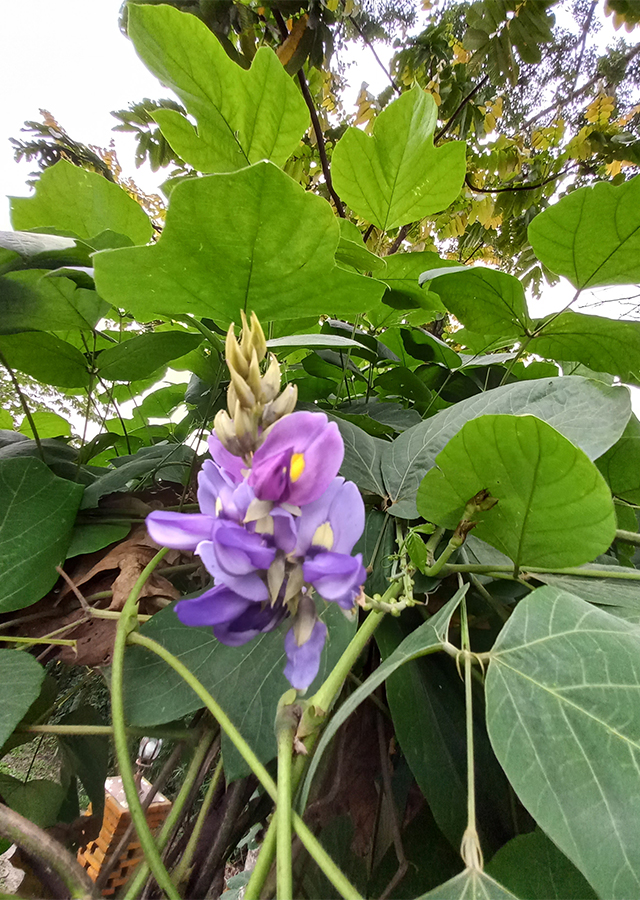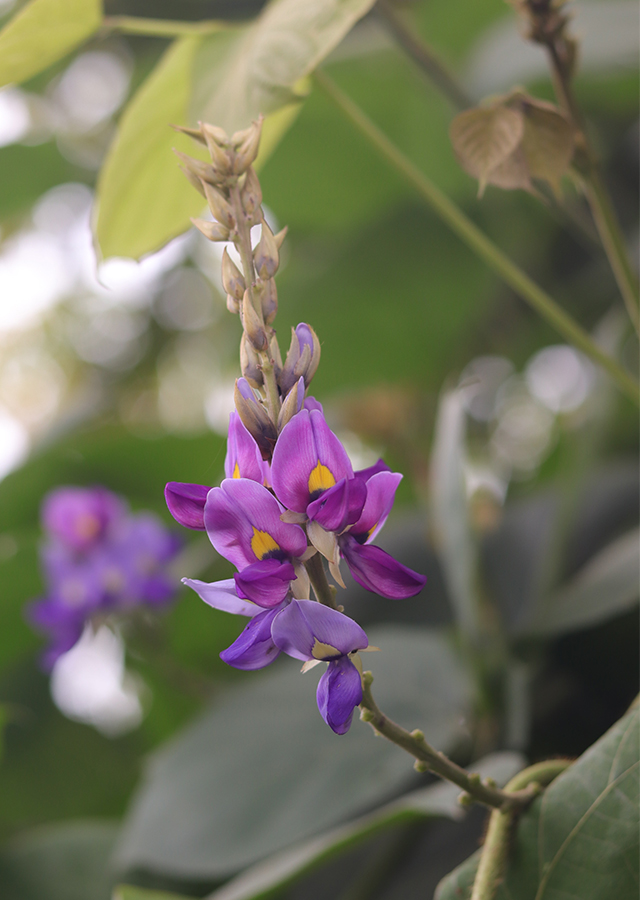Traditional Herbs from Pueraria montana
new_formed boil
- Wash clean enough stems of fresh kudzu.
- Grind the ingredients finely until it becomes a paste.
- Put the paste on the boil.
- Repeat until healed.
What is Pueraria montana Looks like??



Parts of Pueraria montana that could be used
- Leaves
- Flowers
- Roots
- Stem
Pueraria montana Distribution
Kudzu is a legume native to China, Japan and other parts of Southeast Asia. This plant has spread or been introduced to many tropical regions including Oceania, Central Europe, Central and South America and the continental United States. In China, kudzu is generally used in oriental herbal medicine, and is considered one of the 50 basic herbs in Chinese herbal medicine. All parts of the plant are used as medicine. The roots of kudzu are rich in starch and are widely used as ingredients in making foods such as making noodles, thickening soups, jelly. The flowers and young leaves can also be used as vegetables.Agroecology of Pueraria montana
Kudzu plants grow in areas at altitudes of up to 1,500 m above sea level. Prefers average annual rainfall in the range of 1,200 - 1,400 mm, well-drained soil, in a sunny position. It grows best when annual daytime temperatures are in the range of 18 - 28 °C, on loamy soil with good fertility. The plant cannot tolerate waterlogging in any type of soil. Prefers a pH in the range of 5.5 - 6.5.
Morphology of Pueraria montana
- Strong taproot.
- Very large tubers up to 2 m long and 18-45 cm wide and weighing 180 kg in old plants.
- Strong stems or branches, about 0.6-2.5 in diameter cm and reaches a length of 30 m.
- Leaves are pinnate, trifoliate (three leaflets), 8-20 cm long and 5-19 cm wide with the shape of each leaf being ovate to round and without curves or having 3 leaf grooves. Leaves are pale green above and light green to grayish below.
- Flowers are purple to blue, grape-smelling, grow in mostly unbranched inflorescences 10-25 cm long.
- Fruit golden-haired pods, brown, flat, oval, 4-13 cm long and 0.6-1.3 cm wide.
- Seeds are flat, ovate and reddish brown with a black mosaic pattern. Approximately 4-5 long mm with a width of 4 mm and a thickness of 2 mm.
Cultivation of Pueraria montana
- Reproduction by seeds and separation of young shoots.
- Before planting, soak the seeds for 12 hours in warm water and sow.
Pueraria montana, more details :
Chemical Content of Pueraria montanaIsoflavonoids and flavonoids, daidzin, daidzein, puerarin, genistin, genistein, tectorigenin, glycirin, tectoridine, 6"-O-xylosyltectoridin, 6"-O-xyloglycitin, biochanin A, and spinasterol, glutamic acid, adenine, asparagine, butyric acid, kakalide.
Benefits of Pueraria montana
Poultice for incipient boils, swelling, sore mouth, treats hangovers, reduces fever, colds, diarrhea, acute intestinal obstruction, dysentery, styptic, angina pectoris and migraine, cures measles.
Simplisia of Pueraria montana
- Prepare the kudzu roots\u00a0then wash thoroughly then drain.
- Dry in direct sunlight for several days or in an oven at\u00a040\u00b0C until the water content\u00a010%.
- Store\u00a0simply in plastic or a container clean and airtight.
Another Facts for Pueraria montana :
Synonym of Pueraria montanaDolichos montanus Lour., Pueraria lobata var. montana (Lour.) Maesen�
Habitus of Pueraria montana
Creepers. Annual vines, reaching 15 - 30 m high
Habitat of Pueraria montana
- Riverside", "Forest", "Roadside", "Grassland
No comments:
Post a Comment